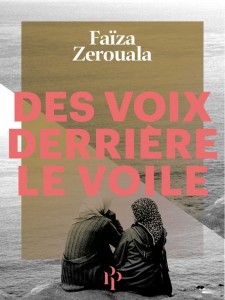Editor’s note: A longer version of this post is available on Tasnim’s personal blog.
Craig Thompson’s graphic novel Habibi took 7 years to complete and is close to 700 pages. The result is described on the book’s website as “a parable about our relationship to the natural world, the cultural divide between the first and third worlds, the common heritage of Christianity and Islam, and, most potently, the magic of storytelling.” Set predominately in the imaginary Wanatolia, Habibi tells the story of Dodola and Zam, two escaped child slaves, whose adventures are interwoven at moments of crises with stories of prophets and miracles, which Thompson brings to life by employing elements of Islamic art. Habibi is a beautifully crafted volume, the ornately decorated pages broadening possibilities for expression in the graphic novel form, as the calligraphy adds an innovative third dimension to the duality of image/text.Through the plot device of Dodola being sold as an illiterate child into marriage with a calligrapher, the narrative delves into the meaning of calligraphy, and as the reader learns to decipher the hidden symbolism of geometric designs and numeric patterns along with the heroine, the narrative acquires a self-conscious mythic resonance.

If Habibi can be seen in part as “a mashup of holy books and comic books,” this juxtaposition of sacred/profane plays out through the interweaving of interludes and adventures, as the meticulously researched and rendered Quranic stories and Islamic art jostle with an Orientalist world of harems, eunuchs, and odalisques reminiscent of an R-rated version of Disney’s Aladdin. Dodola’s narrative in particular features an endless array of savage men victimizing sexualized women, with hardly a page passing without nudity or brutality. As G. Willow Wilson points out, Habibi “contains a slew of clichés with which the Muslim community (especially the female half) has become very weary—underage marriage, harems, eunuchs, slavery, veiling, the imaginative fodder of the right wing.” However, despite the overwhelming stereotypes, Wilson sees a redemptive “self-conscious” element to the Orientalist tropes, which takes Habibi beyond “the usual titillating romp through the vices of a barbaric culture, after which the reader can close the book and thank God he lives in a civilized country.” This raises a couple of questions: when can the incorporation of racist, Orientalist imagery be successful, and does Habibi succeed in working within Orientalist cliches to explore their underpinnings?
In a nuanced review, Nadim Damluji argues that the fact that Habibi approaches “Islam with a clear compassion and level-headedness” has allowed some readers to overlook the fact that “the brutality of Habibi’s Arabs…is a brutality that is never justified or made to face consequences: it just sits there as normalcy.” In a defence of Habibi,Eddie Campbell argues such critiques are overly literal since “Thompson’s need was not to tell us all about the geographical or political Middle East.” In a comment,Leela Corman takes the opposite tack: “Thompson did his research…I appreciated his level of research…because I’m a student of that time and place, myself.”
This overlap is where the problem lies, in claiming that Habibi is both Orientalist fantasy and ethnographic realism. Unlike Rabih Alameddine”s Hakawati for example, which employs magical fairy tales embedded in a realist narrative grappling with Lebanon”s civil war, Habibi collapses any distinction. This dissonance is evident in Thompson’s own hopes for Habibi. On the one hand, Thompson professes to use “Orientalism as a genre like Cowboys and Indians is a genre”as fantasy rather than an accurate representation. On the other hand, he espouses an agenda of humanising Islam after 9/11, wanting “to humanize it a bit and understand it, and focus on the beauty of Arabic and Islamic culture.” It is the ethnographic impulse which is most widely reflected in the enthusiastic reviews which found that Habibi is “certain to join the ranks of graphic novels that expand our understanding of not only the genre but also the world it describes.”
This is not as surprising as it might seem, given that the world is a surreal one, featuring stereotypical sultans and hydroelectric dams, magic ships and oil pipelines. According to Thompson, the blend of fantasy and realistic conceits is inspired by two forms: fantasy epics and comics journalism, which are mapped onto Habibi as an Arabian Nights fairy tale which explores modern environmental catastrophe. This blurring of fantasy and reality can be a powerful strategy of defamiliarization, making the familiar seem foreign in thought-provoking ways. In Habibi, however, the narrative seems to work in the opposite direction, to make familiar the foreign. Rather than being, as one review describes it, “a mature—in all its meanings—glimpse into a world few Westerners are at home with,” Habibi constructs a very recognizable place, familiar in its very outlandishness, a mythical/modern place not far removed from how many conceive of the Arab world.
The narrative follows trajectories which are convincing because of familiar conventions rather than any versimilitude. When the Dodola raises the orphaned Zam, and when Zam is left to fend for himself in the city, the story follows the “child-in-peril-in-the-third-world narratives” of documentaries such as Born into Brothels, which employ what Kathryn Bond Stockton calls “kid Orientalism,” featuring sexualized children in a racialized world. The dynamics of sex and race and suffering as innocence are emphasized with Dodola’s selling her body to feed Zam: if the Arab Dodola is the harem girl of Arabian Nights, the black Zam is familar from the African child UNICEF stock image. Dodola’s body becomes the meeting point of environmental catastrope and Arabian Nights through the trope of sexual/ environmental pollution, as she is described both as ”a slender river, but we plugged her up good!” and as “soiled by the sludge of 1001 cocks!”
At the point when Dodola is kidnapped into the Sultan”s harem, the story turns to desert romance tropes. Bearing out the claim in The Sheik where Edith Hull pedantically insists that “the position of a woman in the desert was a very precarious one” because of Arab men’s “pitiless…disregard of the woman’s subjugation,” Dodola moves constantly from one melodrama to another, from the moment she is sold into child marriage, facing “kidnap, whoring for desert nomads, breakneck escapes from a slave market and an execution squad…a spell in a sultan’s harem, brutal torments in a dungeon, and so on.” The image of the woman’s body in the grasp of black hands, representing the woman as chattel in “the world of men” is a hallmark of desert romances, as is Wanatolia itself as a vague make-believe country. As Christy McCullough points out in an article on the desert romance and the War on Terror: “messy real-life politics aren’t welcome in the world of romance fiction.”
This return us to the questions raised earlier. While the incorporation of racial and cultural stereotypes can be an effective strategy of exaggerating genre tropes to dismantle them, there is little dismantling done here. Instead, the narrative uses Orientalist tropes to produce an authenticity-effect through its adherence to conventions in popular culture. Habibi works within Orientalist fantasy and is successful if read on that level as escapist fantasy fiction. It becomes problematic if you take its dissonant aspirations seriously, because you have to take Orientalist fantasy seriously in the world of Middle East socio-politics. Moreover, the fantasy doesn”t succeed in carrying off its journalistic task.

For example, at one point, the fairy tale is signaled by the words “Zam was soothed by stories.” It is followed by an apparent non-sequitur: “He didn’t realize the precipitation was acid rain,” pushing the environmental agenda, while the calligraphy in the background, Badr Shakir Al-Sayyab’s Rain Song, represents a fragment of Arab culture as rain drops – you can read the translation if you turn to the index, but the calligraphy itself is more image than text, words filling in a woman’s body.
Thompson’s comments on his use of Arabic calligraphy is significant: “it’s almost better to not see the words when you’re looking at them and you can just appreciate them for their visual aesthetic, rather than havethe meaning of the words get in the way.” That to me sums up the dilemma of Habibi: to anyone who understands the language it speaks, the meaning of its imagery will get in the way of appreciating the aesthetic.













